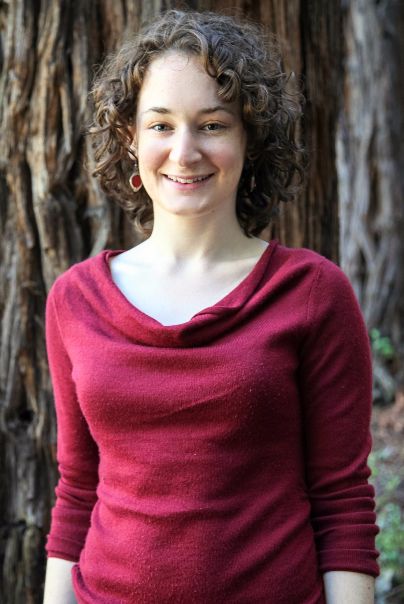If anyone knows that science isn’t all sterile labs and white coats, it’s Sarah Beganskas.
The 25-year-old, fourth-year grad student at UC Santa Cruz has found herself ankle deep in mud and coated with fine dust as she studies what may, one day, be a part of the solution to California’s water crisis: collecting storm runoff so it can percolate into the ground instead of diverting it to rivers and seas.
A native of Long Island, New York, Beganskas is curly-haired, thoughtful, and not easily discouraged, which is an important trait when trying to gather storm-water data in the midst of a prolonged drought.
“An important part of science and research is that things don’t always go as you planned,” Beganskas says. “But there are still valuable lessons you can learn from what you do and conclusions you can draw based on your results—even if it’s not what you hoped for.”
Working with Earth and Planetary Sciences Professor Andrew Fisher, Beganskas’s “lab” is a four-acre infiltration pond located on a working farm near the Pajaro River in Watsonville. The pond is designed to catch storm runoff from a surrounding 170-acre tract, allowing it to percolate back into the Aromas Aquifer which, like a failing bank, is currently experiencing more withdrawals than deposits.
The goal of the project is to recharge 100 acre-feet of water per year by using the pond. One hundred acre-feet (123,000 cubic meters) of water is enough to supply 200 families of four for 12 months. But, because of the drought, that goal was elusive. Then, in December 2014, a big storm hit the area, dumping more than four inches of rain in a short period of time.
Water that usually ran into the Pajaro River was, instead, corralled in the infiltration pond where it filtered back into the aquifer. The goal of returning 100 acre-feet of water into the ground was met.
“One of my first-order findings is that this sort of system can work,” Beganskas says of her research. “Another finding was that, even in a severe drought, the potential is there to collect a lot of runoff during intense storm events.”
These are important findings, not only for the Pajaro Valley where up to a dozen of these ponds could recharge about 10 percent of needed groundwater, but also for the rest of California. According to the state’s 2014 Sustainable Groundwater Management Act, local agencies will be charged with managing groundwater.
“The kind of work I’m doing is something many of those agencies might turn to in the next decade or so as they come up with a plan to increase groundwater sustainability across the state,” Beganskas says.
Her mentor, Fisher, agrees, pointing to the Pajaro Valley site.
“These kinds of systems (infiltration ponds) can help the basin to restore hydrologic system services like it did before it was urbanized and developed for agriculture,” he says. “This approach will not solve all the problems, but it is a piece of the solution.”
For Beganskas, who earned her undergraduate degree in geology and computer science at Amherst College in Massachusetts, doing work that was relevant to everyday lives was important.
“I wanted to work on something I could see with my own eyes,” she says.
It was also important for Beganskas to help ensure more diversity in the STEM fields of science, technology, engineering, and math—all notoriously populated by white males. To that end, she and other UC Santa Cruz grad students formed a group called GEODES (Geologists Encouraging Openness and Diversity in Earth Sciences), which aims to help women and minorities succeed in the Earth sciences.
The group has held gatherings to build community and also hosted workshops on topics like growth mindset versus fixed mindset and the so-called Imposter Syndrome in which people, especially minorities and women in STEM fields, may feel inadequate and thus have to “fake” confidence.
Says Fisher: “Sarah is smart, creative, and goal oriented. She also has very strong common sense and sees how to solve problems.”
Even if that means standing in the middle of muddy field.



